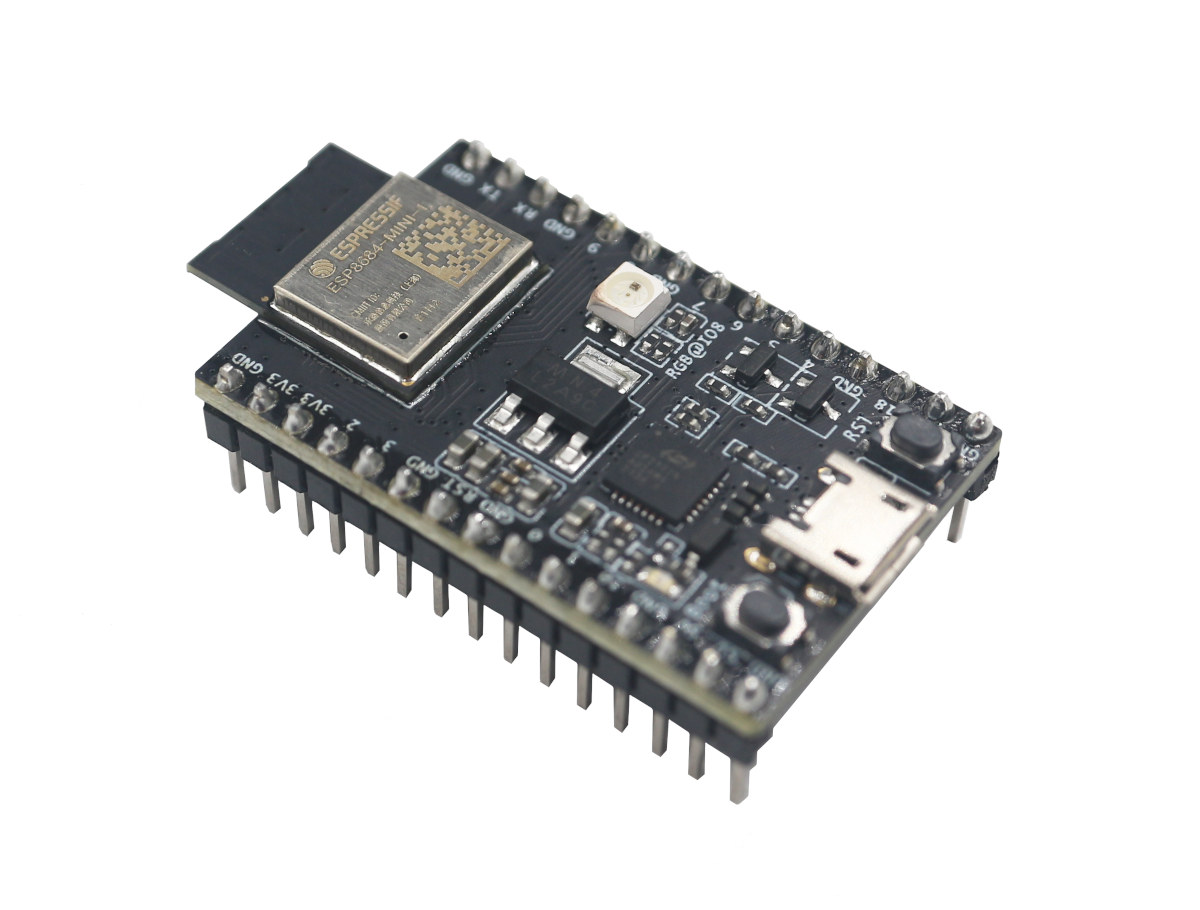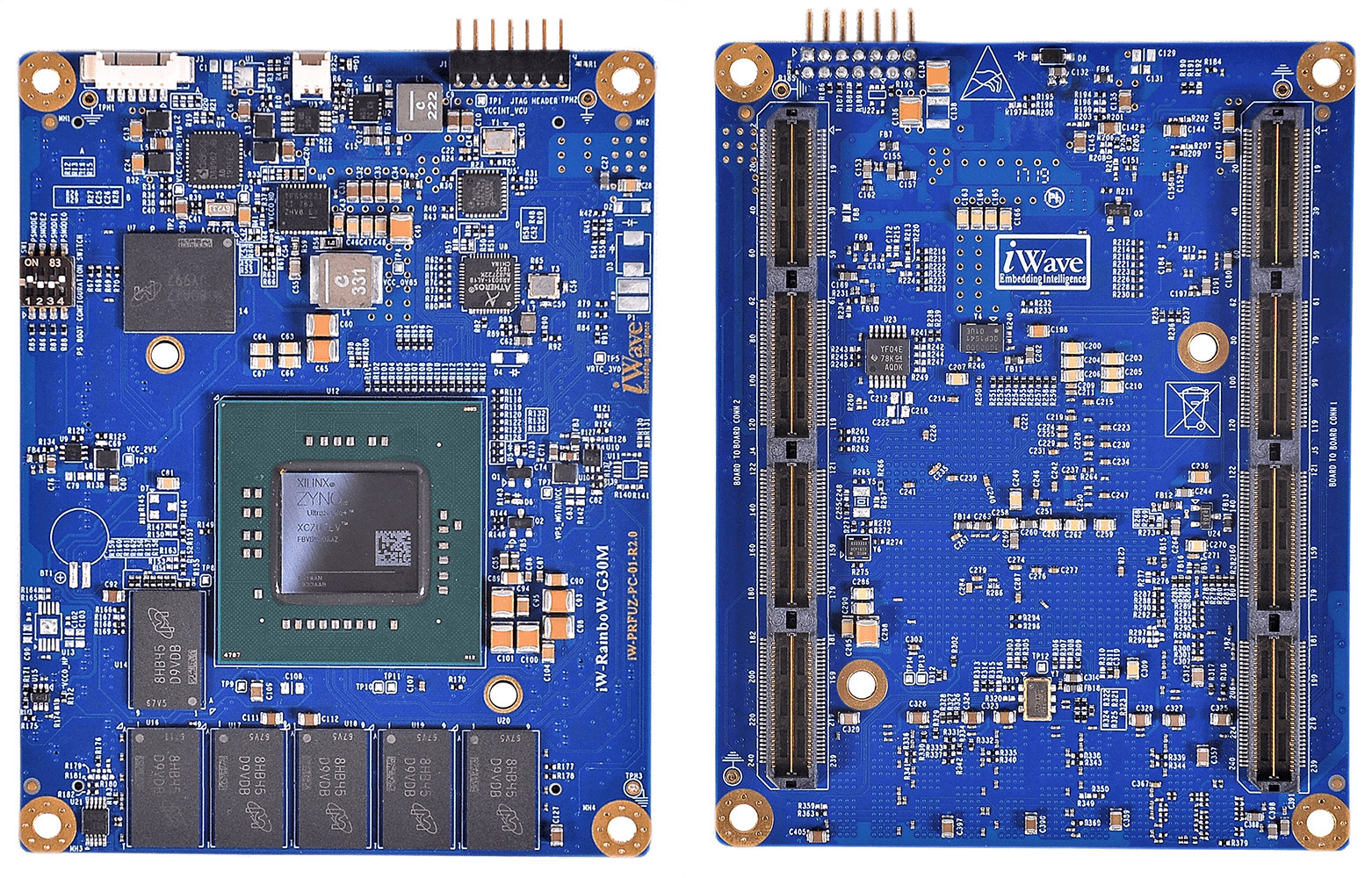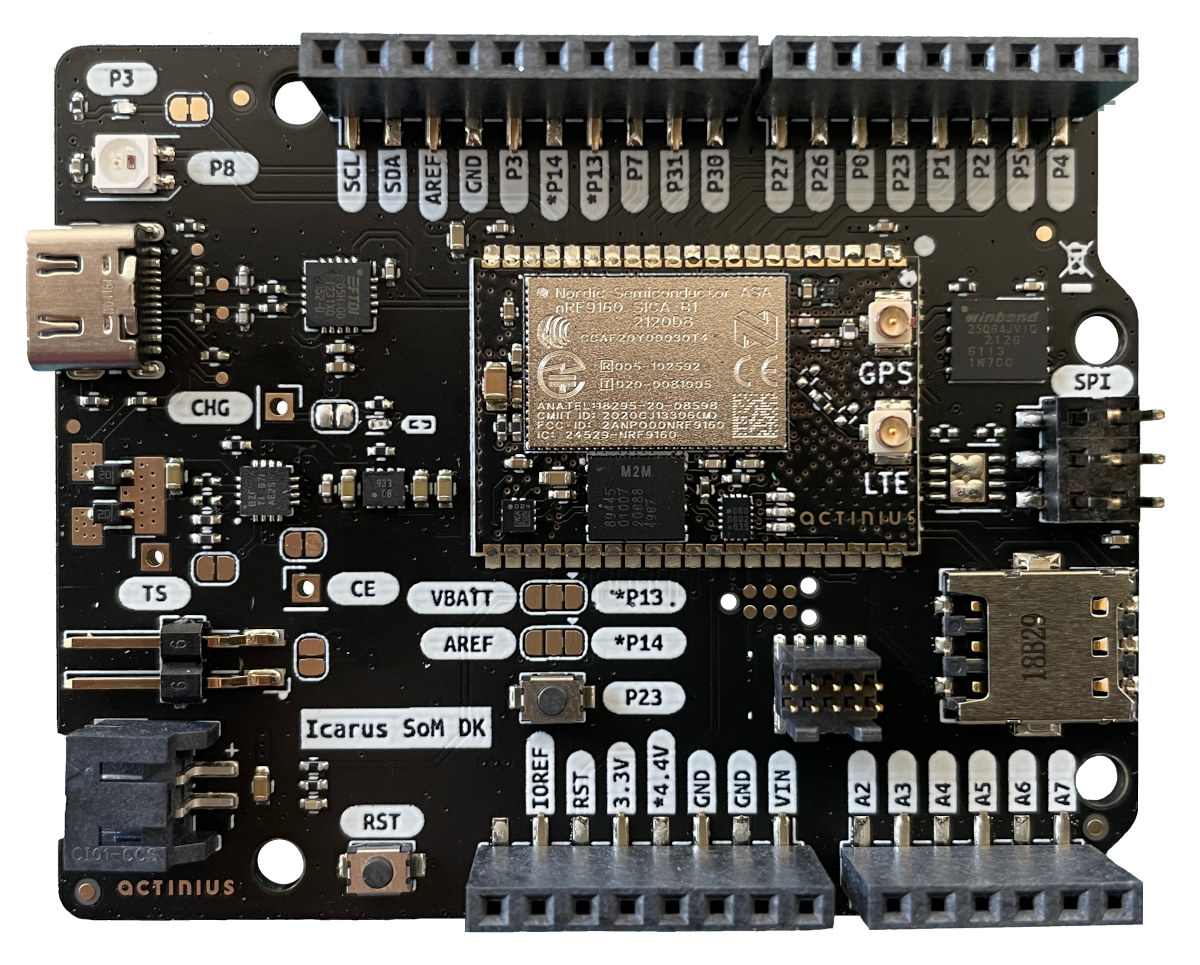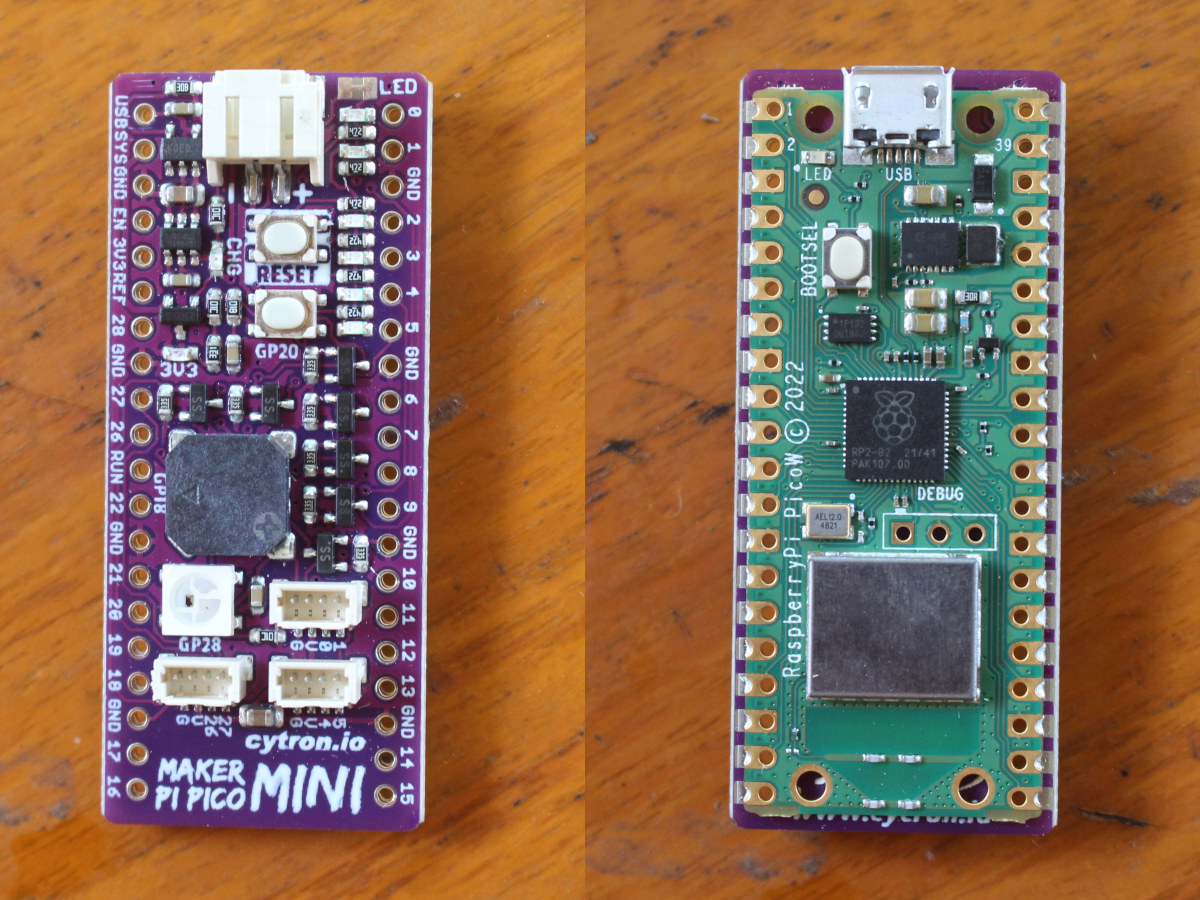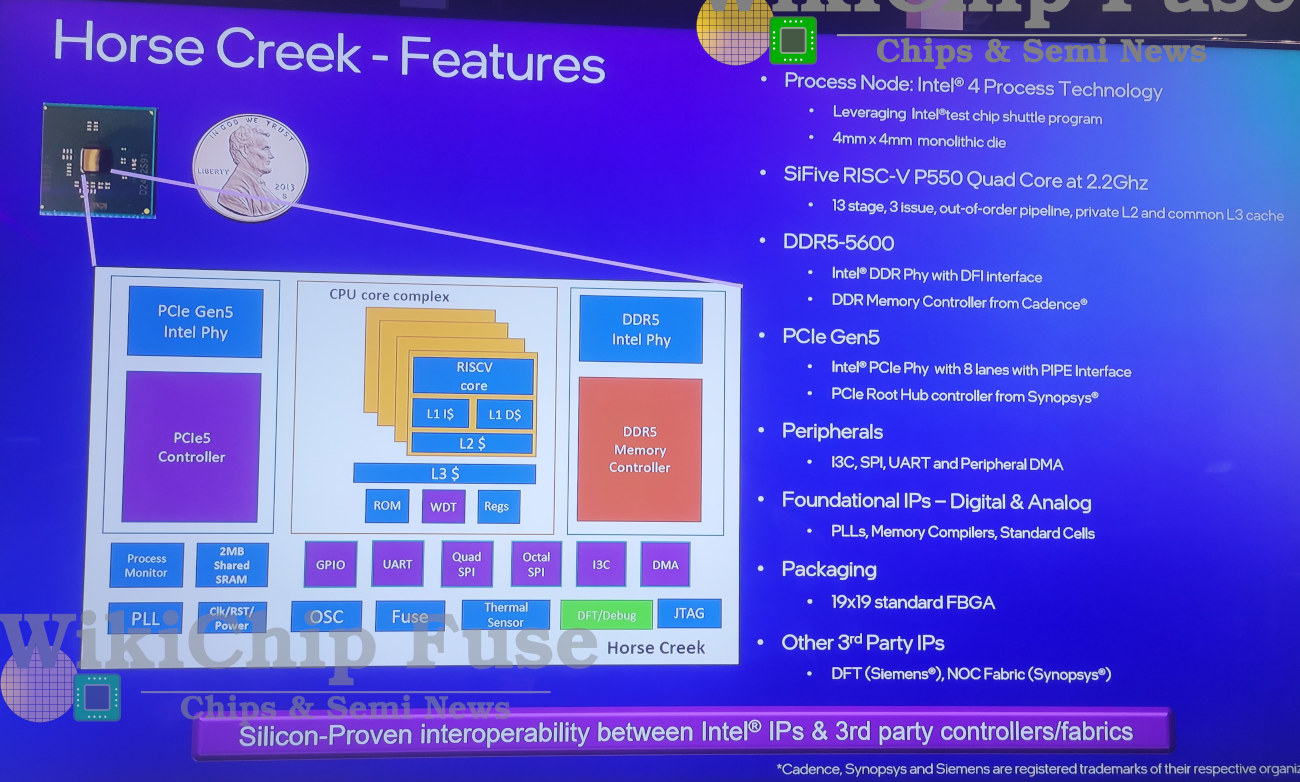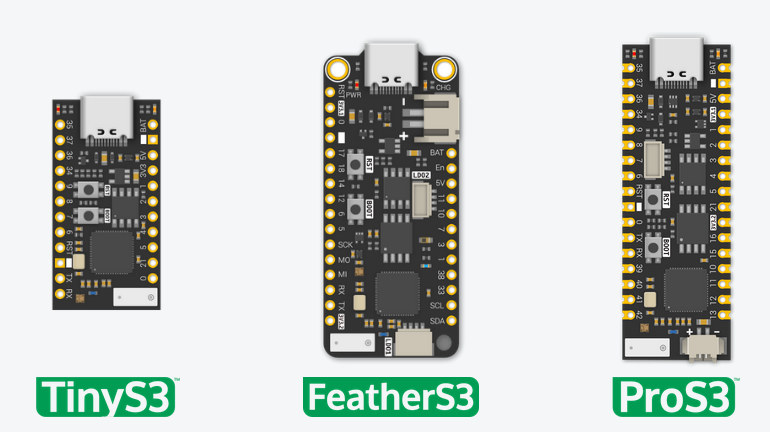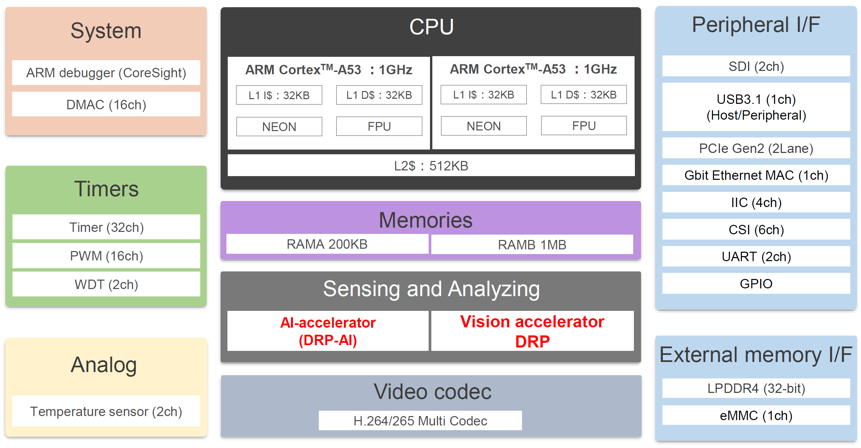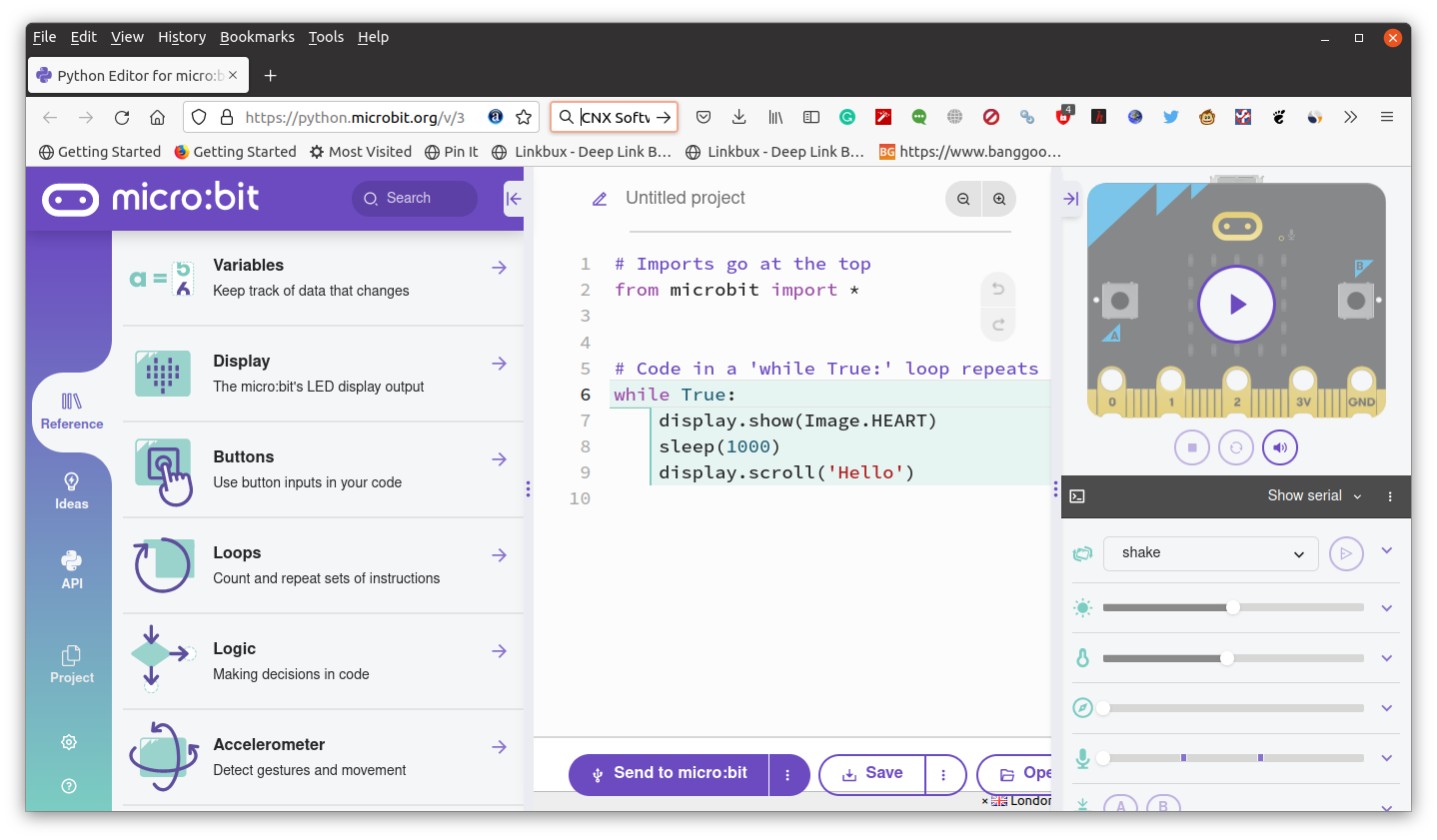Espressif Systems ESP8684 is a single-core RISC-V microcontroller with 2.4 GHz WiFi 4 and Bluetooth 5.0 LE (BLE) connectivity that also integrates 1, 2, or 4MB flash into a tiny 4x4mm QFN package. The SoC is listed under the ESP32-C2 product family on the Espressif website and can be found in MINI and WROOM modules, as well as the ESP8684-DevKitM-1 development kit. All three parts, namely ESP8684H1, ESP8684H2, and ESP8684H4, are designed to work in the -40 to 105°C temperature range, ESP8684 specifications: CPU – 32-bit RISC-V processor up to 120 MHz; 305.42 CoreMark; 2.55 CoreMark/MHz Memory – 272 KB SRAM (16 KB for cache) Storage – 576 KB ROM, 1 to 4MB flash (SiP) Wireless 802.11 b/g/n-compliant WiFi 4 1T1R Up to 72.2 Mbps link rate Support for 20 MHz bandwidth Station mode, SoftAP mode, Station + SoftAP mode Wi-Fi Multimedia (WMM) Antenna diversity Bluetooth 5 LE up to […]
Zynq UltraScale+ SoM with up to 12GB RAM targets LiDAR applications
iWave Systems iW-RainboW-G30M is a system-on-module (SoM) based on AMD Xilinx Zynq UltraScale+ ZU4/ZU5/ZU7 FPGA MPSoC specially geared towards LiDAR applications for scientific and military applications. The module comes with up to 12GB of RAM, 4GB for the programmable logic (PL) and 8GB for the Arm Cortex-A53/R5-based Processing System (PS), two 240-pin high-density, high-speed connectors with 142 user I/Os, 16x GTH transceivers up to 16.3Gbps, and four GTR transceivers up to 6Gbps. iW-RainboW-G30M specifications: FPGA MPSoC – AMD Xilinx Zynq Ultrascale+ ZU4, ZU5, or ZU7 MPSoC with Processing System (PS) featuring 2x or 4x Arm Cortex-A53 core @ 1.5 GHz, two Cortex-R5 cores @ 600MHz, H.264/H.265 Video Encoder/Decoder (VCU), ARM Mali-400MP2 GPU @ 677MHz, and Programming Logic (PL)/FPGA with up to 504K Logic cells & 230K LUTs System Memory 4GB DDR4 64-bit RAM with ECC for PS (upgradeable up to 8GB) 2GB DDR4 16-bit RAM for PL (upgradeable up to […]
Arduino-shaped development board ships with a Nordic Semi nRF9160 module
Actinius Icarus SoM DK development board follows the Arduino Uno form factor and is equipped with the company’s Icacus SoM based on Nordic Semi nRF9160 system-in-package with LTE Cat-M, NB-IoT, and GPS connectivity. The development kit provides an eSIM on the module and an additional Nano SIM socket on the mainboard, Arduino headers for a wide range of I/Os and compatibility with Arduino Shields, a set of user LEDs, reset and user buttons, and a battery charging port. Icarus SoM DK specifications: Icarus SoM SiP – Nordic Semi nRF9160-SICA system-in-package with Arm Cortex-M33 MCU, 1024 KB flash, 256 KB SRAM, and LTE Cat-M1 (eMTC), Cat-NB1 (NB-IoT), and GPS connectivity Storage – 64Mbit SPI flash On-board eSIM Antennas – 2x u.FL connectors for LTE and GPS Sensor – Low power 3-axis accelerometer I/Os – 2x 20 castellated holes with GPIOS, I2C, SWD, Reset, SIM card signals, and power pins Supply Voltage […]
Maker Pi Pico Mini adds battery, buzzer, GPIO LEDs to Raspberry Pi Pico (W)
Cytron’s Maker Pi Pico Mini is an add-on board for the Raspberry Pi Pico and the latest Raspberry Pi Pico W with a battery port, GPIO status LEDs, a WS2812B Neopixel RGB LED, passive piezo buzzer, user and reset button, as well as “Maker” ports for expansion. It comes with most of the features found in the company’s Maker Pi Pico board, but in a much more compact form factor, since the add-on board is only slightly larger than the Raspberry Pi Pico to allow for soldering using the castellated holes. Maker Pi Pico Mini specifications: Fitted with Raspberry Pi Pico / Pico W LEDs – 6x Status indicator LEDs for GPIOs, 1x RGB LED (WS2812B Neopixel) Audio – 1x Passive piezo buzzer (to play musical tones or melody) Buttons – Reset and user buttons Expansion 3x Maker ports compatible with Qwiic and STEMMA QT, as well as Grove modules […]
Intel Horse Creek platform showcased with SiFive P550 RISC-V CPU, 8GB DDR5, PCIe Gen5
When SiFive introduced its Performance P550 64-bit RISC-V processor in 2021, we were told that Intel would use it in the Horse Creek platform with “leading-edge interface IP such as DDR and PCIe” and manufactured with Intel’s 7nm process. We now have more details about the Horse Creek platform, as a development board was showcased for the first time in public at the Intel Innovation 2022 Developer Conference, and according to a report by Wikichip, the Cortex-A75 class quad-core RISC-V processor runs at up to 2.2 GHz, supports DDR5-5600 memory and eight PCIe 5.0 lanes, and was taped out with Intel 4 process. Horse Creek platform specifications: CPU – SiFive P500 quad-core RISC-V processor @ up to 2.2 GHz with a 13-stage, 3-issue, out-of-order (OoO) pipeline, private L2 cache, and common L3 cache Memory – DDR5-5600 interface PCIe – PCIe Gen5 through Intel’s PCIe PHY with 8 lanes, Synopsys PCIe […]
Unexpected Maker TinyS3, FeatherS3 and ProS3 boards feature ESP32-S3 dual-core wireless MCU
Seon Rozenblum, better known as Unexpected Maker, has launched upgrades to its ESP32-S2 boards such as the TinyS2 with ESP32-S3 variants, namely TinyS3, FeatherS3, and ProS3 boards. The new boards share the same form factors as the TinyS2, FeatherS2, and ProS2, but they get a more powerful dual-core microcontroller with AI instructions and 512kB SRAM. The microcontroller also adds Bluetooth 5.0 Low Energy (BLE) connectivity with Bluetooth Mesh support, instead of just WiFi 4 connectivity found in the earlier boards. TinyS3, FeatherS3, and ProS3 boards share the following features: SoC – Espressif Systems’ ESP32-S3 with Dual-core 32bit Xtensa LX7 microcontroller up to 240MHz RISC-V ULP Co-processor 512KB SRAM 2.4GHz Wifi 4 (802.11b/g/n) Bluetooth 5.0 BLE + Mesh Memory – 8MB QSPI PSRAM Flash – 8MB to 16MB depending on the model. USB – 1x USB Type-C connector with reverse back-feed protection for power and programming Antenna – 3D high gain […]
Renesas RZ/V2MA microprocessor embeds AI & OpenCV accelerators for image processing
Renesas has launched the RZ/V2MA dual-core Arm Cortex-A53 microprocessor with a low-power (1TOPS/W) DRP-AI accelerator and one OpenCV accelerator for rule-based image processing enabling vision AI applications. The MPU also supports H.265 and H.264 video decoding and encoding, offers LPDDR4 memory and eMMC flash interfaces, as well as Gigabit Ethernet, a USB 3.1 interface, PCIe Gen 2, and more. The RZ/V2MA microprocessor targets applications ranging from AI-equipped gateways to video servers, security gates, POS terminals, and robotic arms. Renesas RZ/V2MA specifications: CPU – 2x Arm Cortex-A53 up to 1.0GHz Memory – 32-bit LPDDR4-3200 Storage – 1x eMMC 4.5.1 flash interface Vision and Artificial Intelligence accelerator DRP-AI at 1.0 TOPS/W class OpenCV Accelerator (DRP) Video H.265/H.264 Multi Codec Encoding: h.265 up to 2160p, h.264 up to 1080p Decoding: h.265 up to 2160p, h.264 up to 1080p Networking – 1x Gigabit Ethernet USB – 1x USB 3.1 Gen1 host/peripheral up to 5 […]
The BBC has released a new web-based Python editor for the micro:bit board
There are already Python editors such as Thonny, but the BBC thought those were not good enough and released a new web-based Python editor specifically designed for the micro:bit education board targeting 11 to 14 years old pupils. The micro:bit Python editor includes drag and drop code examples, code structure & error highlighting, auto-complete feature, a simulator to test the code before uploading it to the micro:bit board, and a Quick ideas section to help pupils get started with projects. The BBC’s micro:bit Python editor works with both the micro:bit V1 and V2, but note the simulator shows a micro:bit V2, so if you are using the previous generation micro:bit, some code may work on the simulator but not on your micro:bit V2 board. For that reason, the BBC marked the code that only works on a micro:bit V2 with ‘V2’ in the Reference section. While the BCC is a […]


